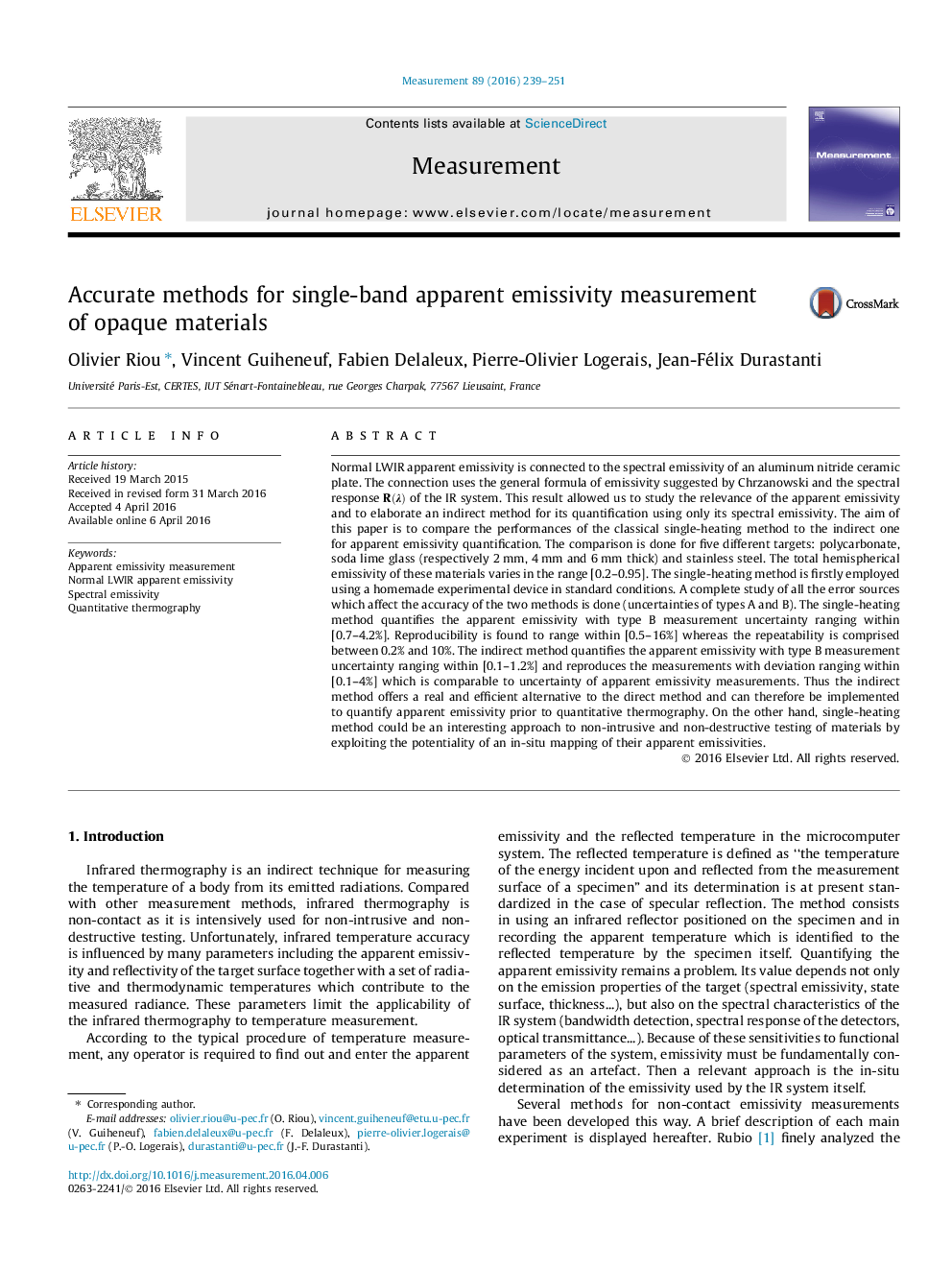| Article ID | Journal | Published Year | Pages | File Type |
|---|---|---|---|---|
| 7123735 | Measurement | 2016 | 13 Pages |
Abstract
Normal LWIR apparent emissivity is connected to the spectral emissivity of an aluminum nitride ceramic plate. The connection uses the general formula of emissivity suggested by Chrzanowski and the spectral response R(λ) of the IR system. This result allowed us to study the relevance of the apparent emissivity and to elaborate an indirect method for its quantification using only its spectral emissivity. The aim of this paper is to compare the performances of the classical single-heating method to the indirect one for apparent emissivity quantification. The comparison is done for five different targets: polycarbonate, soda lime glass (respectively 2 mm, 4 mm and 6 mm thick) and stainless steel. The total hemispherical emissivity of these materials varies in the range [0.2-0.95]. The single-heating method is firstly employed using a homemade experimental device in standard conditions. A complete study of all the error sources which affect the accuracy of the two methods is done (uncertainties of types A and B). The single-heating method quantifies the apparent emissivity with type B measurement uncertainty ranging within [0.7-4.2%]. Reproducibility is found to range within [0.5-16%] whereas the repeatability is comprised between 0.2% and 10%. The indirect method quantifies the apparent emissivity with type B measurement uncertainty ranging within [0.1-1.2%] and reproduces the measurements with deviation ranging within [0.1-4%] which is comparable to uncertainty of apparent emissivity measurements. Thus the indirect method offers a real and efficient alternative to the direct method and can therefore be implemented to quantify apparent emissivity prior to quantitative thermography. On the other hand, single-heating method could be an interesting approach to non-intrusive and non-destructive testing of materials by exploiting the potentiality of an in-situ mapping of their apparent emissivities.
Related Topics
Physical Sciences and Engineering
Engineering
Control and Systems Engineering
Authors
Olivier Riou, Vincent Guiheneuf, Fabien Delaleux, Pierre-Olivier Logerais, Jean-Félix Durastanti,
